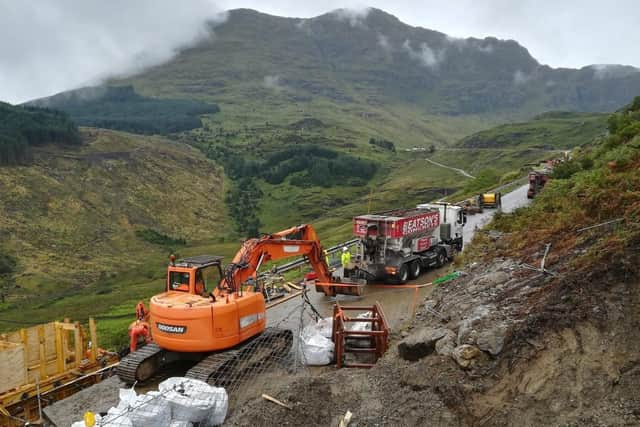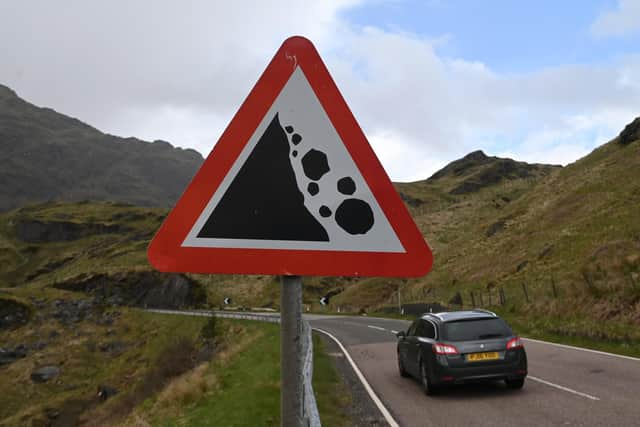Drones bring high hopes for landslide victory on Scotland's iconic Rest and Be Thankful road
Foresters have been carrying out trials to find out.
Remote-controlled mini helicopters have been stocked with seeds from native trees and deployed on hillsides above the A83 at Glen Croe, in Argyll, as part of ongoing work designed to stabilise the landscape near the infamous Rest and Be Thankful viewpoint.
The ground-breaking project is thought to be the first of its kind in the UK. If successful, it could speed up planting and allow access to places that could be hazardous for human workers.
Advertisement
Hide AdAdvertisement
Hide AdThe A83 runs for almost 100 miles between Loch Lomond and Campbeltown, at the southern end of the Kintyre peninsula.
But a section near the Rest and Be Thankful – the highest point on the route – has become notorious for landslips during heavy rain events, leading to closures and long diversions.
A range of measures have been devised as part of a £4 million Scottish Government programme aimed at reducing the impacts and likelihood of slips, including creation of a series of massive ‘catch pits’ capable of holding thousands of tonnes of debris and forestation of the slopes to bind soil.


National agency Forestry and Land Scotland (FLS) has been testing the machines to establish whether they can be effectively used to plant seeds.
The team is optimistic after the first stage of the initiative.
James Hand, operations forester for FLS, is overseeing the work.
“Using drones to plant trees is quite common in north America and parts of Europe, but as far as we are aware it’s new to the UK,” he said.


“The benefits of using a drone are that it is quicker and more able to scatter seeds on sites that people would find it hard – or even dangerous – to work on.
Advertisement
Hide AdAdvertisement
Hide Ad“This first trial was about scattering seeds and determining how fast and high to fly and still achieve the dispersal that we want.
“It went very well and it’s now a matter of waiting to see how many seedlings emerge.”
The project’s first phase saw 20kg of native tree seeds, sourced from the local area, scattered over six hectares of the glen over a two-day period.
The site will be monitored until spring 2023, when a second phase is due to take place.
Mr Hand said: “Next year we plan to step up the trial and use a drone with a gravity-fed system to drop pellets of seed, containing a nutrient gel, into the soil and exposed mineral slopes.
“The gel packets should increase the likelihood of the seeds germinating and growing.
“If the technology and the technique both work, this could be of significant benefit when we look at increasing the resilience of other sites that are at risk from the changing climate.”
The Rest and Be Thankful has been hit by landslides for more than a century, but more frequently in recent years.
Advertisement
Hide AdAdvertisement
Hide AdProblems are forecast to get worse as climate change drives an increase in extreme weather.
Five options are being considered for a replacement road on the other side of Glen Croe, with costs reaching up to £860m and work likely to take around ten years to complete.
Comments
Want to join the conversation? Please or to comment on this article.
